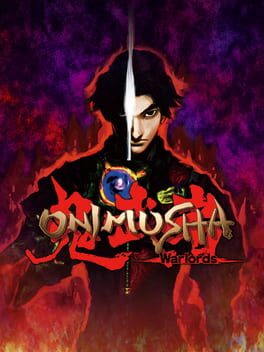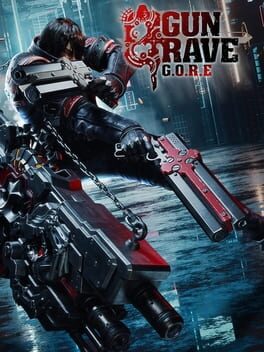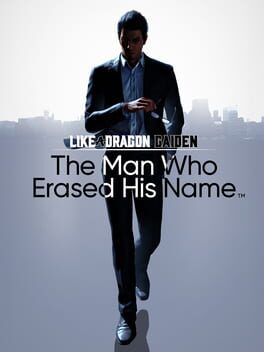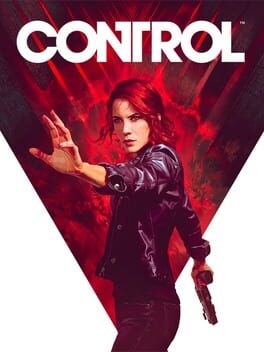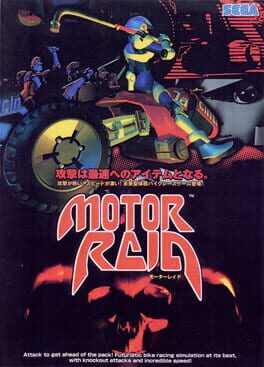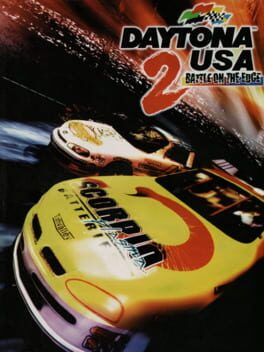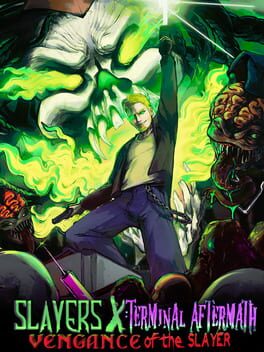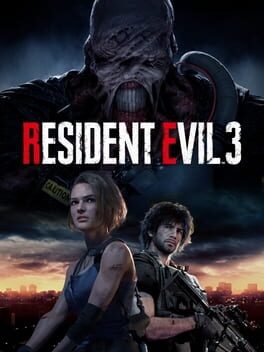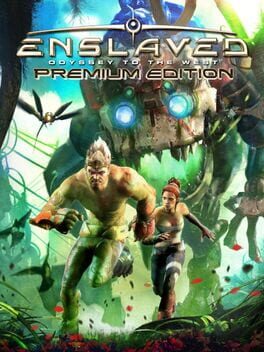Bottle
344 Reviews liked by Bottle
Onimusha: Warlords
2019
Onimusha: Warlords is a game I have been interested in playing for a very long time. I may have been interested in playing this game longer than some people reading this have been alive. So I finally got around to playing it and god damn it I should have played this sooner. Onimusha: Warlords is a short dose of greatness straight out of the golden era of gaming. 2001 just keeps on giving.
Onimusha: Warlords borrows a lot from the survival horror games of the time. It has tank controls, pre rendered backgrounds, fixed camera angles, puzzles, a bit of back tracking and using items to unlock your way through the game. But instead of being a survival horror it uses these elements to make an action game. So you could kind of say it falls somewhere between Resident Evil and Devil May Cry. However it doesn’t have as well designed locations and puzzles as the best survival horror and the action isn’t on the same level as a Devil May Cry or Ninja Gaiden.
First of all I want to address the controls. There is the option to use the stick but don’t do that. Use the direction buttons that controls like this were made for, it’s just better. I know there are probably plenty of people that will see fixed camera angles and tank controls and say things like ‘outdated’ or ‘slow and clunky’ or ‘needs modernising.’ To these people, please take a small amount of time and effort to learn to play it. Games should not have to bend to your comfort zone, low effort and taste. It shows a lack of understanding for how things like specific input methods, restrictions or limitations can create amazing gameplay experiences. Videogames were more interesting when we didn’t have standardised controls and it allowed for more unique experiences. The controls in Onimusha: Warlords are excellent. After a brief time getting comfortable with it you will find yourself running smoothly through the environments and weaving your way past enemies without getting touched. Then when you use R1 to lock onto enemies the controls change. Now the directions do quick forward/back/side steps. Perfect for dodging attacks, creating space or closing the distance. It works really well and you’ll be dancing with these demons in no time.
The combat is a bit on the simple side but it's satisfying and I didn’t tire of it across multiple play throughs. Combined with the controls I just explained you use a sword for basic combos and there is a block, thrust, kick, ground stab and upward slash. You can also perform counters if you attack or block at just the right time. The other attacks you have are magic which is great for tough enemies or dealing with groups but it does run out. Finally you have your ranged weapons, the first one being a bow, which is great for the floating enemies or just attacking from a safer distance. At first I found weapon swapping to be annoying as you can’t do it while attacking or moving but then I remembered this is an old game and you just pause to use the menu to instantly swap equipment or use items. Occasionally you’ll switch to another character which while similar to control is geared more towards evading enemies as they can flip over their heads and they don’t have an incentive to kill enemies.
There are also some other interesting things going on that I liked. First there is the risk/reward constantly in combat. The enemies drop souls when they die which is your currency for upgrades, or health and magic depending on the colour. They float around for a while before disappearing and you need to absorb them. This means stopping and being defenceless during battle or just letting them go but obviously you really need them. Then there is health. Herbs fill some health but medicine works way better. But upgrading an herb to medicine costs souls you need for upgrades. Some upgrades are actually required to unlock some doors as well. Once you are good enough you can actually play through the game without using any health items and without upgrading many things. Despite progression appearing simple and straight forward they found a way to make it interesting and give you more challenges on further play throughs once you’re more skilled. Speaking of further play throughs, I love the way this game progresses. You fumble your way through the first time and then get better and better and faster too with each play through. Then there is also an unlockable mini game, Oni Spirits, and another difficulty unlocked after that.
Onimusha: Warlords is set in 1500s Japan but with horror and demons, so of course it looks cool. It’s also one of the strongest looking early PS2 games and as far as I can tell they’ve done a good job with this remaster. It has great looking backgrounds, characters and enemies and the atmosphere is superb. I have to give a shout out to the CGI cutscenes as well, these would have blown me away back then and are clearly a bit ahead of their time. You play as a samurai, Samanosuke, and a ninja, Kaede, working together to defeat some demons and rescue a princess from becoming a sacrifice because her blood will make Nobunaga, who has an agreement with the demons, much more powerful. It is a solid enough story, with good characters, that is really well paced. It’s fleshed out further by reading the documents found throughout the game. The voice actors do a great job and the soundtrack is good too. I played in Japanese as that just felt right but the English has its own charm as well. By far the biggest problem here is that most cutscenes are not skippable. This is a huge sin in a highly replayable game and could even harm a single first play through if you die too often. I don’t have a problem with the cutscenes but I didn’t need to see them this often and it was frustrating.
Onimusha’s biggest problem though is the length. There is just not enough here. Your first playthrough will likely be less than six hours possibly even less than five. Then further playthroughs will probably be three or under. It feels like a short, small game much more so than the Resident Evil’s of this time. Onimusha: Warlords really needed more everything; more locations, more weapons, more puzzles, more enemies, more documents, more items, more upgrades and more unlockables. I think a couple of hours longer would have been the sweet spot but at least it’s really replayable and it is fun to blast through in one sitting. It is a bit of a shame because Onimusha: Warlords isn’t that far off of standing alongside the GOATs. If only there was more to it, skippable cutscenes and more impressively designed locations and puzzles.
I’m so glad we got this remaster and I hope to see the next Onimusha game get the same. How has this series not been fully revived, remastered and remade? Onimusha: Warlords may not quite be one of the all time greats but it’s still fantastic and not far off. Let me make things really simple. I am off to order an original copy of Onimusha: Warlords and the sequel, Onimusha 2: Samurai's Destiny, which I am really looking forward to. If this game looks appealing to you I would recommend you do the same.
8.7/10
Onimusha: Warlords borrows a lot from the survival horror games of the time. It has tank controls, pre rendered backgrounds, fixed camera angles, puzzles, a bit of back tracking and using items to unlock your way through the game. But instead of being a survival horror it uses these elements to make an action game. So you could kind of say it falls somewhere between Resident Evil and Devil May Cry. However it doesn’t have as well designed locations and puzzles as the best survival horror and the action isn’t on the same level as a Devil May Cry or Ninja Gaiden.
First of all I want to address the controls. There is the option to use the stick but don’t do that. Use the direction buttons that controls like this were made for, it’s just better. I know there are probably plenty of people that will see fixed camera angles and tank controls and say things like ‘outdated’ or ‘slow and clunky’ or ‘needs modernising.’ To these people, please take a small amount of time and effort to learn to play it. Games should not have to bend to your comfort zone, low effort and taste. It shows a lack of understanding for how things like specific input methods, restrictions or limitations can create amazing gameplay experiences. Videogames were more interesting when we didn’t have standardised controls and it allowed for more unique experiences. The controls in Onimusha: Warlords are excellent. After a brief time getting comfortable with it you will find yourself running smoothly through the environments and weaving your way past enemies without getting touched. Then when you use R1 to lock onto enemies the controls change. Now the directions do quick forward/back/side steps. Perfect for dodging attacks, creating space or closing the distance. It works really well and you’ll be dancing with these demons in no time.
The combat is a bit on the simple side but it's satisfying and I didn’t tire of it across multiple play throughs. Combined with the controls I just explained you use a sword for basic combos and there is a block, thrust, kick, ground stab and upward slash. You can also perform counters if you attack or block at just the right time. The other attacks you have are magic which is great for tough enemies or dealing with groups but it does run out. Finally you have your ranged weapons, the first one being a bow, which is great for the floating enemies or just attacking from a safer distance. At first I found weapon swapping to be annoying as you can’t do it while attacking or moving but then I remembered this is an old game and you just pause to use the menu to instantly swap equipment or use items. Occasionally you’ll switch to another character which while similar to control is geared more towards evading enemies as they can flip over their heads and they don’t have an incentive to kill enemies.
There are also some other interesting things going on that I liked. First there is the risk/reward constantly in combat. The enemies drop souls when they die which is your currency for upgrades, or health and magic depending on the colour. They float around for a while before disappearing and you need to absorb them. This means stopping and being defenceless during battle or just letting them go but obviously you really need them. Then there is health. Herbs fill some health but medicine works way better. But upgrading an herb to medicine costs souls you need for upgrades. Some upgrades are actually required to unlock some doors as well. Once you are good enough you can actually play through the game without using any health items and without upgrading many things. Despite progression appearing simple and straight forward they found a way to make it interesting and give you more challenges on further play throughs once you’re more skilled. Speaking of further play throughs, I love the way this game progresses. You fumble your way through the first time and then get better and better and faster too with each play through. Then there is also an unlockable mini game, Oni Spirits, and another difficulty unlocked after that.
Onimusha: Warlords is set in 1500s Japan but with horror and demons, so of course it looks cool. It’s also one of the strongest looking early PS2 games and as far as I can tell they’ve done a good job with this remaster. It has great looking backgrounds, characters and enemies and the atmosphere is superb. I have to give a shout out to the CGI cutscenes as well, these would have blown me away back then and are clearly a bit ahead of their time. You play as a samurai, Samanosuke, and a ninja, Kaede, working together to defeat some demons and rescue a princess from becoming a sacrifice because her blood will make Nobunaga, who has an agreement with the demons, much more powerful. It is a solid enough story, with good characters, that is really well paced. It’s fleshed out further by reading the documents found throughout the game. The voice actors do a great job and the soundtrack is good too. I played in Japanese as that just felt right but the English has its own charm as well. By far the biggest problem here is that most cutscenes are not skippable. This is a huge sin in a highly replayable game and could even harm a single first play through if you die too often. I don’t have a problem with the cutscenes but I didn’t need to see them this often and it was frustrating.
Onimusha’s biggest problem though is the length. There is just not enough here. Your first playthrough will likely be less than six hours possibly even less than five. Then further playthroughs will probably be three or under. It feels like a short, small game much more so than the Resident Evil’s of this time. Onimusha: Warlords really needed more everything; more locations, more weapons, more puzzles, more enemies, more documents, more items, more upgrades and more unlockables. I think a couple of hours longer would have been the sweet spot but at least it’s really replayable and it is fun to blast through in one sitting. It is a bit of a shame because Onimusha: Warlords isn’t that far off of standing alongside the GOATs. If only there was more to it, skippable cutscenes and more impressively designed locations and puzzles.
I’m so glad we got this remaster and I hope to see the next Onimusha game get the same. How has this series not been fully revived, remastered and remade? Onimusha: Warlords may not quite be one of the all time greats but it’s still fantastic and not far off. Let me make things really simple. I am off to order an original copy of Onimusha: Warlords and the sequel, Onimusha 2: Samurai's Destiny, which I am really looking forward to. If this game looks appealing to you I would recommend you do the same.
8.7/10
Gungrave G.O.R.E
2022
This is the purest action game you could ever play, there is no exploration, no collectibles, no puzzles, no pick ups, and the story might as well not exist. You are literally dropped into a linear corrdor with the only inent and purpose being to shoot shit up. On paper it sounds amazing but somehow the game still falls short for me, i can see the developers put a lot of love into this but even then theres a certain level of jank you'll have to overlook. Even on the hardest difficulty this isnt a game you need to turn your brain on for, its a fun time for a short time
Gungrave G.O.R.E
2022
A game made out of an undead man, two guns, a coffin, and… a meter. Walk slow, shoot fast, build meter to earn special shots— use them well or die. Play better, build that meter faster, clear the room even faster. Blast through corridors, shoot away on the rails, clear out rooms to get to the next door—just keep marching your bullet storm forward relentlessly. And in the right state of mind, all this can be a pretty good time.
What I found interesting right away was the way it all feels. Grave is big, heavy, overburdened by the coffin he carries, and so his movement is deliberate, slow, even sluggish. But his basic attack speed is very fast. It’s a combo not seen in many action games. Beyond that, there’s enough verbs and systems here to make the gameplay satisfying. You walk very slow while shooting and you must keep shooting almost all the time. (Guns are firing so incessantly that after a long session the nerves in my hands almost felt overloaded from the constant aggressive rumble emitting from the controller.) You can run if you stop shooting, but it’s more of a jog than a sprint. On offense, pistols are basically always on with a variety of meter eating special one-off attacks sprinkled in. The pistols fire fast while walking, but even faster still if you stay in place for a few seconds. This lets you trade mobility for damage at any time. Pistols can be charged up to release a charge shot to bust through enemy shields. A 360° rapid fire attack stance be used if you have enough of a chain going and is pretty useful if you are getting swarmed. A double damage mode can be triggered if you have the meter for it, but you won’t build more meter while it’s active. As for defense, you can dodge roll (it’s a pretty heavy roll), melee goons that get too close with the coffin, parry incoming projectiles with said coffin, launch hook from said coffin to drag an enemy in to use as a body shield. As for healing, well you just keep shooting. Basic shots don’t heal, but special moves restore health. This is an action game inhabiting its own subgenre. Not much else feels much like this at all. For that alone it’s worth trying out. There’s something here for those who like arcade and action games. There are additional difficulty settings and a ranking system. Typical of good action games, these can both bring out the best in the combat.
I definitely saw limitations here— uninspired enemies recycled way too frequently, not so original locations, an indifferent story, and a pretty silly attitude. Yet I kept playing because the action was plenty satisfying to sustain a playthrough. And I’m even left with the urge to go back one more time on a higher difficulty. Is purely mechanical satisfaction enough to make a game good? If so, this is a good game. The mechanics are the message here and the message is the medium and this medium is a videogame.
Note: patches may have improved this game significantly since release. The most clearly important change has been that an auto-fire option is available now. Hard to imagine tapping the triggers as much as this game would require without auto-fire. Played the game on a PS5 about a year after release. The Switch edition apparently has even more changes. Some may be for the better. Will update this once I get a chance to play it.
What I found interesting right away was the way it all feels. Grave is big, heavy, overburdened by the coffin he carries, and so his movement is deliberate, slow, even sluggish. But his basic attack speed is very fast. It’s a combo not seen in many action games. Beyond that, there’s enough verbs and systems here to make the gameplay satisfying. You walk very slow while shooting and you must keep shooting almost all the time. (Guns are firing so incessantly that after a long session the nerves in my hands almost felt overloaded from the constant aggressive rumble emitting from the controller.) You can run if you stop shooting, but it’s more of a jog than a sprint. On offense, pistols are basically always on with a variety of meter eating special one-off attacks sprinkled in. The pistols fire fast while walking, but even faster still if you stay in place for a few seconds. This lets you trade mobility for damage at any time. Pistols can be charged up to release a charge shot to bust through enemy shields. A 360° rapid fire attack stance be used if you have enough of a chain going and is pretty useful if you are getting swarmed. A double damage mode can be triggered if you have the meter for it, but you won’t build more meter while it’s active. As for defense, you can dodge roll (it’s a pretty heavy roll), melee goons that get too close with the coffin, parry incoming projectiles with said coffin, launch hook from said coffin to drag an enemy in to use as a body shield. As for healing, well you just keep shooting. Basic shots don’t heal, but special moves restore health. This is an action game inhabiting its own subgenre. Not much else feels much like this at all. For that alone it’s worth trying out. There’s something here for those who like arcade and action games. There are additional difficulty settings and a ranking system. Typical of good action games, these can both bring out the best in the combat.
I definitely saw limitations here— uninspired enemies recycled way too frequently, not so original locations, an indifferent story, and a pretty silly attitude. Yet I kept playing because the action was plenty satisfying to sustain a playthrough. And I’m even left with the urge to go back one more time on a higher difficulty. Is purely mechanical satisfaction enough to make a game good? If so, this is a good game. The mechanics are the message here and the message is the medium and this medium is a videogame.
Note: patches may have improved this game significantly since release. The most clearly important change has been that an auto-fire option is available now. Hard to imagine tapping the triggers as much as this game would require without auto-fire. Played the game on a PS5 about a year after release. The Switch edition apparently has even more changes. Some may be for the better. Will update this once I get a chance to play it.
The Daidoji are incompetent buffoons, 3/4 of the game are spent running errands, there's so much padding it looks like they were trying to meet an arbitrary length to justify the game being sold full price (with dlc lmao), the ennemies are either thousands of armed guys as aggressive as if they were single or block spammers
But that fucking ending man I cried with him
But that fucking ending man I cried with him
Control
2019
Played through it again because I never got round to the DLC and had sold my PS4 copy. Grabbed the Ultimate Edition off PS+.
I enjoyed it before, and it's still decent, but this time I was hit much harder with how the game's biggest letdown is it being a shooter.
You read notes about stuff like employees boringly cataloguing 100 boxes of individual human teeth, or consulting incantations to calm a stapler that's tearing up the staff room, but all you get to do is shoot red dudes and float around. Pressing square to cleanse things, without even an appropriate mini game or something to jazz it up. The game borrows heavily from SCP shit, but fails to get that a lot of the draw with that stuff is the weird containment procedures and rituals in dealing with them. Control is every SCP story ending with "Agents drew their guns and put the subject down".
I genuinely wish the gameplay was about dealing with anomalies by using a big tome you had to lug about to consult what procedures to use. Discovering new ones from hands on experience and adding to the data. Unique interactions instead of just walking into rooms and enemies spawn in so you start firing. It's a shame because the environmental design is immaculate in places, and as such feels wasted on mindless floating and dashing.
Also every object that isn't concrete sounds like milk bottles clinking together when you bump into them. It's daft. Maybe that's an AWE or something too.
I enjoyed it before, and it's still decent, but this time I was hit much harder with how the game's biggest letdown is it being a shooter.
You read notes about stuff like employees boringly cataloguing 100 boxes of individual human teeth, or consulting incantations to calm a stapler that's tearing up the staff room, but all you get to do is shoot red dudes and float around. Pressing square to cleanse things, without even an appropriate mini game or something to jazz it up. The game borrows heavily from SCP shit, but fails to get that a lot of the draw with that stuff is the weird containment procedures and rituals in dealing with them. Control is every SCP story ending with "Agents drew their guns and put the subject down".
I genuinely wish the gameplay was about dealing with anomalies by using a big tome you had to lug about to consult what procedures to use. Discovering new ones from hands on experience and adding to the data. Unique interactions instead of just walking into rooms and enemies spawn in so you start firing. It's a shame because the environmental design is immaculate in places, and as such feels wasted on mindless floating and dashing.
Also every object that isn't concrete sounds like milk bottles clinking together when you bump into them. It's daft. Maybe that's an AWE or something too.
Control
2019
To address the elephant in the room: the presentation on display is simply impeccable. Brutalist architecture, lots of extremely well-rendered destructible environments, fancy ray-tracing effects, beautiful colours and lighting with the semi-official HDR patch (highly recommended); the cutscenes are very well directed, featuring some excellently surreal scenes, and the use of colour never fails to be striking. Paying this game for the first time four years after release, it is still an absolute visual treat.
The gameplay is quite engaging, giving the player a small but varied set of tools to use against groups of enemies in the aforementioned destructible environments. It never bored me in my playthrough of the main game + the two add-ons, and the only real complaint I have on this front is that it has a bit of a backwards difficulty curve where the first boss was the hardest fight in the game simply because Jesse barely had any abilities — the shield and the ability to glide are the last abilities you get, and both serve to greatly increase your defensive capabilities and manoeuvrability — the player should have got access to these much earlier IMO.
The worldbuilding is taking clear inspiration from SCP, but I did not mind that at all — Remedy have done the legwork of establishing their own fictional world and intertwining the FBC into it. It is just about as entertaining to read the plethora of documents available in the game as it is to read the SCP wiki.
The main plot is where the game falters in my opinion. It starts off with a strong premise, but is then bogged down with a lot of expository dialogue and meandering around the facility without really moving the plot forward... and just as the rising action really starts and you are heading into the climax, it suddenly ends.The DLCs do not help much, as one is a somewhat brief but interesting look into the potential future of Jesse as a character after the events of the game, and the other is essentially a teaser for Alan Wake II. The main story just suddenly deflates and will possibly be properly resolved in Control II.
I also wish to give a special mention to the soundscape of the game — the combat music provides a steady beat without being grating, and there are some delightfully eerie ambient tracks accompanying the brutalist architecture as you explore the Oldest House. It was entirely inoffensive at its worst, and effective at building an oppressive atmosphere at its best.
Overall, it's hard for me to find reasons not to recommend the game — great tactile response providing satisfying gameplay, enough build/tactical variety to make you consider your upgrades, lots of eye candy, intriguing, if ultimately disappointing main plot, I'd say everyone should give Control a shot. One thing I can say for certain is that itnis an incredibly vast improvement on Alan Wake, and it makes me curious about Quantum Break and how that might compare quality-wise... that, and Alan Wake II. My hopes for Alan Wake II are through the roof after playing this one.
The gameplay is quite engaging, giving the player a small but varied set of tools to use against groups of enemies in the aforementioned destructible environments. It never bored me in my playthrough of the main game + the two add-ons, and the only real complaint I have on this front is that it has a bit of a backwards difficulty curve where the first boss was the hardest fight in the game simply because Jesse barely had any abilities — the shield and the ability to glide are the last abilities you get, and both serve to greatly increase your defensive capabilities and manoeuvrability — the player should have got access to these much earlier IMO.
The worldbuilding is taking clear inspiration from SCP, but I did not mind that at all — Remedy have done the legwork of establishing their own fictional world and intertwining the FBC into it. It is just about as entertaining to read the plethora of documents available in the game as it is to read the SCP wiki.
The main plot is where the game falters in my opinion. It starts off with a strong premise, but is then bogged down with a lot of expository dialogue and meandering around the facility without really moving the plot forward... and just as the rising action really starts and you are heading into the climax, it suddenly ends.The DLCs do not help much, as one is a somewhat brief but interesting look into the potential future of Jesse as a character after the events of the game, and the other is essentially a teaser for Alan Wake II. The main story just suddenly deflates and will possibly be properly resolved in Control II.
I also wish to give a special mention to the soundscape of the game — the combat music provides a steady beat without being grating, and there are some delightfully eerie ambient tracks accompanying the brutalist architecture as you explore the Oldest House. It was entirely inoffensive at its worst, and effective at building an oppressive atmosphere at its best.
Overall, it's hard for me to find reasons not to recommend the game — great tactile response providing satisfying gameplay, enough build/tactical variety to make you consider your upgrades, lots of eye candy, intriguing, if ultimately disappointing main plot, I'd say everyone should give Control a shot. One thing I can say for certain is that itnis an incredibly vast improvement on Alan Wake, and it makes me curious about Quantum Break and how that might compare quality-wise... that, and Alan Wake II. My hopes for Alan Wake II are through the roof after playing this one.
As a known hater of Yakuza 6, I am amazed that Gaiden was not only able redeem 6's cop-out ending, but provides a hefty level of drama and character exploration into an isolated Kazuma Kiryu (or as he's known here: Joryu).
Since this is about the longtime protagonist of the series, we return to an action oriented experience with "Joryu" utilizing both his classic attack style alongside a gadget filled "agent" approach to provide plenty of options against either waves of goons or a few tough cookies.
This feels like a perfect send-off for the character of Kazuma Kiryu if RGG finally commits to killing off the beloved Uncle of the series. Between the cut-scene cinematography, the amazing action choreography, and the exploration into the legacy of the franchise and Kiryu's legacy on those he's touched, RGG has truly outdone themselves with this companion piece to Yakuza: Like A Dragon.
Since this is about the longtime protagonist of the series, we return to an action oriented experience with "Joryu" utilizing both his classic attack style alongside a gadget filled "agent" approach to provide plenty of options against either waves of goons or a few tough cookies.
This feels like a perfect send-off for the character of Kazuma Kiryu if RGG finally commits to killing off the beloved Uncle of the series. Between the cut-scene cinematography, the amazing action choreography, and the exploration into the legacy of the franchise and Kiryu's legacy on those he's touched, RGG has truly outdone themselves with this companion piece to Yakuza: Like A Dragon.
Motor Raid
1997
You know, I joke a lot to myself about the "guy that buys the yakuza games solely for the arcade games", but here I am, I am the guy now. And how could I not be? For the first time in the 25(!!!) years since this game first hit arcades, we finally have a playable version of this game on a home console, with no need for obtuse command-prompt emulator frontends getting in our way.
This game basically takes everything that the first Daytona did and continues to do it just as well. 3 courses to drive through with the first basically being a training stage for learning how to drift properly and the other 2 being more interesting race tracks. Drifting in this game is the same as the first; you can do so through either gear shifting or braking and regardless of which option there is quite a high skill ceiling. The visuals are incredible, really leaning into the theme-park attraction style vibes and thrills that come from these kinds of arcade racers, with setpieces that include cities, ice glaciers, haunted houses, canyons, an alien space ship, wide open fields, and a giant rocking pirate ship serving as eye candy to zoom through.
With attractive visuals to lure me in with the deep mechanics to keep me playing, this is yet another example of a banger arcade racing game. The version featured in the latest Yakuza game is a rebranded version of the "power edition" of this game, which adds some new content like a marathon endurance course combining all 3 tracks together and brings the original daytona car as an option. They also changed the beginner courses scenery from a lush biodome to a generic nascar track and scrubbed out the daytona branding due to licensing, which is lame but it is what it is. A hornet by any other name drives just as fast.
if sega adds scud race to a yakuza game i will personally fly to sega HQ and kiss the entire ryu ga gotuku studio staff
This game basically takes everything that the first Daytona did and continues to do it just as well. 3 courses to drive through with the first basically being a training stage for learning how to drift properly and the other 2 being more interesting race tracks. Drifting in this game is the same as the first; you can do so through either gear shifting or braking and regardless of which option there is quite a high skill ceiling. The visuals are incredible, really leaning into the theme-park attraction style vibes and thrills that come from these kinds of arcade racers, with setpieces that include cities, ice glaciers, haunted houses, canyons, an alien space ship, wide open fields, and a giant rocking pirate ship serving as eye candy to zoom through.
With attractive visuals to lure me in with the deep mechanics to keep me playing, this is yet another example of a banger arcade racing game. The version featured in the latest Yakuza game is a rebranded version of the "power edition" of this game, which adds some new content like a marathon endurance course combining all 3 tracks together and brings the original daytona car as an option. They also changed the beginner courses scenery from a lush biodome to a generic nascar track and scrubbed out the daytona branding due to licensing, which is lame but it is what it is. A hornet by any other name drives just as fast.
if sega adds scud race to a yakuza game i will personally fly to sega HQ and kiss the entire ryu ga gotuku studio staff
Sonic Superstars
2023
What i hate is people calling this game tryhard or wannabe edgy. Is it so hard to believe some people are just cool? Am I supposed to hate my awesome life like everyone else? No. I think i'm awesome, i think awesome things are awesome, and im not joking at all. pisses me off. The game is so cool All the guns feel awesome, i love it very much. It has a lot of personality and you can feel zane's real personality slipping in every corner. also learned this is a spinoff of a game called hypnospace outlaw and ill definitely play that too after this. I love the s blade as well as the glass shotgun, which is a very unique way of getting the player to focus on the environment and not just run through it all.
Resident Evil 3
2020
Categorically worse than its predecessor in almost every way: where Phantasmagoria was quite straightforward for a PC adventure game, the sequel is irritatingly obscure at every moment. If you attempt to go through this game without a guide, be prepared for a miserable time. I got stuck for no less than an hour because I hadn't thought of showing every character every item in my inventory. Most of the game's puzzles consist of typing in passwords that are no more logical than someone said them to you in a cutscene once, or, you found the words somewhere in the world. If that sounds like every adventure game ever, you're not wrong, but somehow they're even worse in practice here. At one point you go to a particular location and are turned away by the police in a way reminiscent of any video game telling you "you can't do this right now; try something else", maybe leading any regular person to go elsewhere in the world. Well, not so in this game—inexplicably, the solution is to just click the area again and this time the cop won't be there because ???.
If the puzzles aren't bad enough, somehow the game has a user interface so much worse than Phantasmagoria 1 it's astonishing. Navigating through the world is regularly frustrating, and the mouse cursor might be the worst I've ever seen in a video game. I guess it's supposed to be your workplace's logo, the negative space of a W contained in a circle, but it just kinda looks like pointy teeth to me. It sucks real bad. Navigating through the inventory is a chore, and you will have to play around in there for solutions.
On top of all this, the audio mixing might be the worst of all time in a video game. I'm willing to believe the horrendous mix between the videos and music are ScummVM's doing, but that aside, the dialogue in cutscenes frequently range from an inaudible mumble to loud screams. I felt like I needed a volume knob to ride the entire time.
If I'm being nitpicky to a degree I wasn't for the first game, ultimately the reason is thus: whereas the first game was charming and engaging, there's really not a whole lot here to love. There's some intrigue in the conspiracy behind your workplace, but it's all an overwrought mess that's not all that fun to uncover. The death scenes are fun in a goofy slasher flick type of way, but that's about it. I guess the game does have a scene with a titty or two and some bondage scenes, which I suppose is rather wild for a video game in 1996, but also: so what. However, to its credit, the game does have a kind of surprising gay romance subplot to it that's handled astonishingly sweetly. Arguably the only sincerely affecting scene in the whole thing.
At the end of the day, sadly, this just isn't a very good game. There's certainly some value to it in the way that there's value to a lousy horror movie, but unlike the game that came before it, I doubt you'll be coming out of Phantasmagoria 2: A Puzzle of Flesh with much sincere respect for it.
If the puzzles aren't bad enough, somehow the game has a user interface so much worse than Phantasmagoria 1 it's astonishing. Navigating through the world is regularly frustrating, and the mouse cursor might be the worst I've ever seen in a video game. I guess it's supposed to be your workplace's logo, the negative space of a W contained in a circle, but it just kinda looks like pointy teeth to me. It sucks real bad. Navigating through the inventory is a chore, and you will have to play around in there for solutions.
On top of all this, the audio mixing might be the worst of all time in a video game. I'm willing to believe the horrendous mix between the videos and music are ScummVM's doing, but that aside, the dialogue in cutscenes frequently range from an inaudible mumble to loud screams. I felt like I needed a volume knob to ride the entire time.
If I'm being nitpicky to a degree I wasn't for the first game, ultimately the reason is thus: whereas the first game was charming and engaging, there's really not a whole lot here to love. There's some intrigue in the conspiracy behind your workplace, but it's all an overwrought mess that's not all that fun to uncover. The death scenes are fun in a goofy slasher flick type of way, but that's about it. I guess the game does have a scene with a titty or two and some bondage scenes, which I suppose is rather wild for a video game in 1996, but also: so what. However, to its credit, the game does have a kind of surprising gay romance subplot to it that's handled astonishingly sweetly. Arguably the only sincerely affecting scene in the whole thing.
At the end of the day, sadly, this just isn't a very good game. There's certainly some value to it in the way that there's value to a lousy horror movie, but unlike the game that came before it, I doubt you'll be coming out of Phantasmagoria 2: A Puzzle of Flesh with much sincere respect for it.
